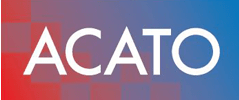ISO 27001 Risk Assessment Methodology Explained

ISO 27001 Risk Assessment Methodology Explained: How to Conduct an Effective Risk Assessment
Information security failures cost organizations millions each year, making a robust ISO 27001 risk assessment methodology essential for protecting assets and ensuring compliance. This guide outlines a clear process for identifying, analyzing, evaluating, treating, and monitoring risks within an Information Security Management System (ISMS). Readers will learn the six key steps of ISO 27001 risk assessment, how to develop a treatment plan, the role of the Statement of Applicability (SoA), why documenting methodology matters, and which tools support continuous improvement.
What Are the Key Steps in the ISO 27001 Risk Assessment Process?
An ISO 27001 risk assessment methodology comprises six sequential steps that drive informed security decisions. An ISO 27001 internal audit checklist such as Acato’s comprehensive guide for auditing your ISMS ensures each phase—from risk identification through ongoing monitoring—is verified for effectiveness and compliance.
- Risk Identification – Catalog assets, threats and vulnerabilities.
- Risk Analysis – Assess impact and likelihood for each risk.
- Risk Evaluation – Compare risk levels against acceptance criteria.
- Assign Risk Owners – Designate individuals to manage specific risks.
- Risk Treatment Planning – Select controls and document actions.
- Monitoring and Review – Track residual risk and update criteria.
These steps form a continuous cycle that leads directly into detailed risk identification techniques.
How Do You Identify Risks in ISO 27001?
Risk identification defines which assets are exposed to threats and vulnerabilities. It begins with an up-to-date asset inventory, then maps threat sources (e.g., malware, insider misuse) against known system weaknesses. Reviewing past incidents and interviewing stakeholders helps reveal gaps that feed into the analysis phase.
Identifying risks in this way sets the stage for measuring their potential impact and likelihood.
How Is Risk Analysis Conducted: Assessing Impact and Likelihood?
Risk analysis quantifies each risk by applying standardized scales for impact (e.g., operational, financial, reputational) and likelihood (e.g., rare, occasional, frequent). A risk matrix visualizes where each risk lands, guiding prioritization and ensuring consistency in evaluating threats.
This quantification leads directly into risk evaluation, where criteria determine acceptable thresholds.
What Is Risk Evaluation and How Are Acceptance Criteria Defined?

Risk evaluation compares analyzed risk levels to predefined acceptance criteria, often based on organizational risk appetite or regulatory requirements. Acceptance criteria may include financial thresholds or tolerable incident rates, ensuring only unacceptable risks proceed to treatment.
Defining these criteria clarifies which risks require controls and which can be formally retained.
Who Are Risk Owners and What Are Their Responsibilities?
Risk owners are individuals accountable for implementing risk treatments and monitoring effectiveness. Their responsibilities include approving control selection, allocating resources, reporting status, and escalating issues that exceed acceptance criteria.
With owners in place, the organization can move into formalizing a risk treatment plan.
How Do You Develop an ISO 27001 Risk Treatment Plan?
A risk treatment plan (RTP) documents selected controls, actions, timelines, and responsibilities to mitigate unacceptable risks. It ensures a structured approach to implementing Annex A controls and tracks progress toward reducing the organization’s risk profile.
Below is an overview of ISO 27001 risk treatment options:
| Option | Mechanism | Outcome |
|---|---|---|
| Avoid | Eliminate risky activities | Removes exposure at the source |
| Reduce | Strengthen controls | Lowers impact or likelihood |
| Share | Transfer through insurance or contracts | Distributes potential losses |
| Retain | Accept within criteria | Focuses resources on higher-priority risks |
Selecting controls from Annex A then tailors these options to specific risk scenarios.
What Are the Risk Treatment Options in ISO 27001?
ISO 27001 prescribes four treatment options: avoid, reduce, share, and retain. Avoidance eliminates the risk driver, reduction applies technical or organizational controls, sharing transfers risk, and retention accepts risk within appetite. Each option aligns with strategic objectives and resource availability.
These options inform the mapping of risks to Annex A controls for maximum relevance.
How Are Annex A Controls Selected for Risk Treatment?
Mapping risks to Annex A controls involves identifying control objectives that address root causes of each risk. For example, a high likelihood of data breach may trigger controls in A.8 (Asset Management) and A.13 (Communications Security). Selection balances applicability, cost, and residual exposure.
Control selection flows directly into defining residual risk management.
How Do You Manage Residual Risk After Treatment?
Residual risk is the remaining exposure after treatment efforts. Organizations document residual risk levels, compare them to acceptance criteria, and schedule periodic reviews. Continuous monitoring ensures that emerging threats or control failures prompt updates to the RTP.
Effective residual risk management transitions seamlessly into compliance documentation.
What Is the Statement of Applicability (SoA) and Why Is It Important?

The Statement of Applicability (SoA) lists all Annex A controls and indicates whether each is implemented, excluded, or not applicable, along with justification. It provides auditors and stakeholders a clear snapshot of the organization’s security posture and control rationale.
How Do You Create and Justify Controls in the SoA?
Creating an SoA begins by reviewing risk assessment outputs and RTP decisions. Each control’s inclusion or exclusion is justified by referencing identified risks, legal requirements, or business objectives. Documenting rationale ensures transparency and audit readiness.
Justified controls in the SoA support streamlined audits and evidence-based compliance.
What Role Does the SoA Play in ISO 27001 Certification Audits?
Auditors use the SoA to verify that selected controls align with risk treatment decisions and organizational context. The document serves as both a checklist and a roadmap, reducing audit scope and demonstrating control effectiveness through clear linkage to assessed risks.
A well-prepared SoA accelerates certification and builds stakeholder confidence.
ISO 27001 Risk Assessment Methodology: Step-by-Step Guide
A documented methodology standardizes how risks are identified, analyzed, and treated, ensuring repeatable, auditable processes. It defines risk criteria, establishes roles, and integrates with other ISMS procedures, supporting continuous improvement and stakeholder alignment.
This foundation underpins both asset-based and scenario-based approaches to risk assessment.
What Is the Difference Between Asset-Based and Scenario-Based Risk Assessment?
| Method | Emphasis | Outcome |
|---|---|---|
| Asset-Based Risk Assessment | Assigns risk per asset value and vulnerability | Prioritized controls based on asset criticality |
| Scenario-Based Risk Assessment | Evaluates threat scenarios and use-cases | Dynamic response plans tailored to specific events |
Understanding these approaches guides selection of the most relevant methodology for an organization’s context.
How Are Risk Criteria Like Impact, Likelihood, and Acceptance Established?
Risk criteria are established through stakeholder consultation and alignment with business objectives. Impact scales reflect operational, financial, and reputational consequences; likelihood scales model threat frequency; acceptance thresholds match risk appetite. Documenting these definitions ensures consistent assessment and evaluation.
With criteria defined, risk assessments integrate seamlessly into the ISMS lifecycle.
What Tools and Best Practices Support ISO 27001 Risk Assessment?
Adopting dedicated risk management software and standardized templates accelerates assessment, treatment planning, and SoA creation. Automated risk registers, control libraries, and reporting dashboards bolster accuracy and traceability, embedding risk assessment into routine ISMS reviews.
Which Software Solutions and Templates Facilitate Risk Assessment?
Leading tools offer built-in risk libraries, Annex A control mapping, and customizable RTP and SoA templates. These solutions streamline data entry, generate audit-ready reports, and track residual risk over time. Templates for risk registers and treatment plans ensure all relevant fields are captured and updated.
Using these assets drives efficiency and consistency across assessment cycles.
How Can Risk Assessment Be Integrated into the ISMS Lifecycle?
Risk assessment should align with the Plan-Do-Check-Act cycle by scheduling periodic reviews, embedding risk updates in change management, and linking findings to internal audits. Continuous integration fosters proactive threat detection and ensures that controls evolve alongside the organization’s risk profile.
Embedding risk assessment into every ISMS phase closes the loop on continuous improvement.
Effective ISO 27001 risk assessment methodology empowers organizations to make informed security decisions, maintain compliance, and adapt to evolving threats. By following structured steps, documenting methodology, leveraging Annex A controls, and using appropriate tools, security teams can protect critical assets and demonstrate auditable processes. Continuous monitoring and a clear Statement of Applicability ensure that risk management remains a strategic, forward-looking practice.
Frequently Asked Questions
What are the benefits of implementing ISO 27001 risk assessment methodology?
Implementing ISO 27001 risk assessment methodology provides numerous benefits, including enhanced information security, compliance with legal and regulatory requirements, and improved stakeholder confidence. By systematically identifying and managing risks, organizations can protect sensitive data, reduce the likelihood of security breaches, and minimize potential financial losses. Additionally, a structured approach fosters a culture of continuous improvement, ensuring that security measures evolve alongside emerging threats and organizational changes, ultimately leading to a more resilient information security management system.
How often should risk assessments be conducted under ISO 27001?
Risk assessments under ISO 27001 should be conducted regularly, typically at least annually, or whenever significant changes occur within the organization, such as new technologies, processes, or regulatory requirements. Additionally, ongoing monitoring and review of risks should be part of the continuous improvement cycle. This ensures that the risk assessment remains relevant and effective in addressing current threats and vulnerabilities, allowing organizations to adapt their security measures proactively and maintain compliance with ISO 27001 standards.
What role does employee training play in ISO 27001 risk management?
Employee training is crucial in ISO 27001 risk management as it ensures that all staff members understand their roles and responsibilities regarding information security. Training programs should cover risk awareness, security policies, and procedures, as well as specific threats relevant to the organization. By fostering a culture of security awareness, organizations can reduce the likelihood of human error, enhance compliance with security protocols, and empower employees to identify and report potential risks, ultimately strengthening the overall security posture.
How can organizations measure the effectiveness of their risk treatment plans?
Organizations can measure the effectiveness of their risk treatment plans by establishing key performance indicators (KPIs) that align with their risk management objectives. These KPIs may include metrics such as the number of incidents reported, the time taken to resolve issues, and the level of compliance with established controls. Regular reviews and audits of the risk treatment plan, along with feedback from stakeholders, can also provide insights into its effectiveness. Continuous monitoring and adjustments based on these evaluations ensure that the risk treatment remains relevant and effective.
What challenges might organizations face when implementing ISO 27001?
Organizations may encounter several challenges when implementing ISO 27001, including resistance to change, lack of management support, and insufficient resources. Additionally, aligning the risk assessment process with existing business practices can be complex, particularly in larger organizations. Ensuring that all employees are adequately trained and aware of their responsibilities is also critical. To overcome these challenges, organizations should foster a culture of security, secure executive buy-in, and allocate appropriate resources to support the implementation process effectively.
How does ISO 27001 integrate with other management systems?
ISO 27001 can be integrated with other management systems, such as ISO 9001 (Quality Management) and ISO 22301 (Business Continuity Management), through a unified framework that aligns processes and objectives. This integration allows organizations to streamline operations, reduce duplication of efforts, and enhance overall efficiency. By adopting a holistic approach, organizations can ensure that their information security management system complements other management practices, leading to improved risk management, compliance, and organizational resilience.
Conclusion
Implementing an effective ISO 27001 risk assessment methodology significantly enhances an organization’s information security posture while ensuring compliance with regulatory standards. By systematically identifying, analyzing, and treating risks, businesses can protect sensitive data and foster a culture of continuous improvement. To further strengthen your risk management practices, consider exploring our comprehensive resources and tools tailored for ISO 27001 compliance. Start your journey towards a more secure future today.
